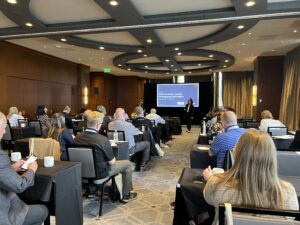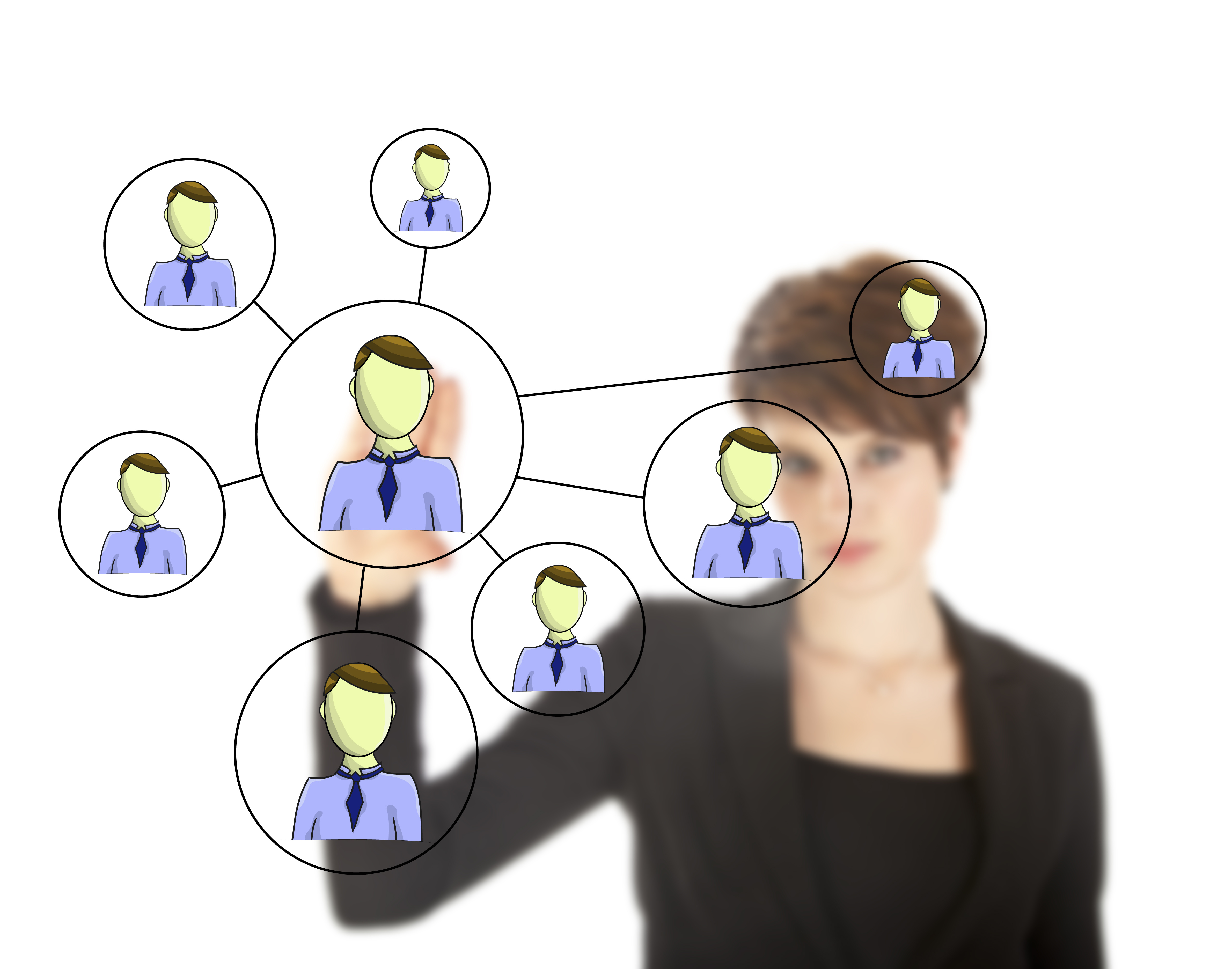Check… One Two…
 Last week I had the pleasure and honor of being a paid speaker at a live conference. It was the first one I was able to do in the past 3 years. Actually, this conference was started and booked in 2019. It was canceled until this year with all the restrictions being eased and everyone feeling more comfortable with live get-togethers.
Last week I had the pleasure and honor of being a paid speaker at a live conference. It was the first one I was able to do in the past 3 years. Actually, this conference was started and booked in 2019. It was canceled until this year with all the restrictions being eased and everyone feeling more comfortable with live get-togethers.
The National Propane Council out of Washington DC was holding its national conference in Minneapolis, Minnesota this year. And I am happy to say that it was a great and successful event for all. But as always, there are some lessons learned that I want to share with you today.
I was hired to give two breakout presentations titled, “Word Up! Email Messages and More to Get Prospects to Take Action” and “B2B Digital Marketing- Best Practices for Better Targeting”. It was a two-day conference and I was given the choice of when I wanted to present. I chose day two of the conference for multiple reasons. I will dig into why a bit later.
Serving Two Clients
 When you are presenting to an audience (as a paid speaker) you have two people that you have to serve. The conference organizer (customer number one), and each person in the audience (customer number two through the total number of attendees.)
When you are presenting to an audience (as a paid speaker) you have two people that you have to serve. The conference organizer (customer number one), and each person in the audience (customer number two through the total number of attendees.)
It's not much different than what I do for my business customers. I have to make the company I work for look good and make them relatable to their customers. Then secondly, I have to generate interest and understand the perspective of their clients. You may think that if you only make your client happy your job is done, but real results from marketing come from making their audience happy. The ultimate goal of all our marketing efforts is to create and distribute information in a way that serves their audience, yet leaves enough room to get them to take action and start a conversation with our client.
Serving The Client
 When it comes to being a quality speaker, you obviously should have interesting and actionable material that serves your client's audience. You have to make the organizer look good. After all, they are the ones paying you. You have to be willing to work within their framework.
When it comes to being a quality speaker, you obviously should have interesting and actionable material that serves your client's audience. You have to make the organizer look good. After all, they are the ones paying you. You have to be willing to work within their framework.
You have to ask the right questions upfront to make sure you understand the audience and their needs. Why are they coming? What do they expect to leave with? What level are they (beginner, an expert, or a mix of both?)
Next, you have to help them brand the content to promote their organization to THEIR audience. If you are speaking for free, it's often assumed that you are doing so to generate business for yourself. When you are a paid speaker, you have to walk a very thin and veiled line when it comes to selling from the stage. I had to completely rework my presentations with their branded template. It took hours to recreate my slides to fit into their brand. That becomes hard to do when you have as many complex slide transitions and animations as I often do to make my content more visually interesting – avoiding death by PowerPoint!
Finally, It's humbling to have speaker reviews in front of the audience that are filled out and handed in at the end of your presentation. Your client wants to see as many 5 star reviews as possible, as do you. But it's not about you, it means that the client delivered the right speaker and right content to meet the needs and expectations of THEIR audience!
Serving The Audience
 Now comes the hard part. You can never please everyone, but you have to keep it simple enough that a novice can understand the basics while giving the experienced pro something that they feel was worth spending an hour of their limited time on (when they had multiple speakers and rooms they could have been in at the same time). You want them to leave the room thinking, “I made the right choice.”
Now comes the hard part. You can never please everyone, but you have to keep it simple enough that a novice can understand the basics while giving the experienced pro something that they feel was worth spending an hour of their limited time on (when they had multiple speakers and rooms they could have been in at the same time). You want them to leave the room thinking, “I made the right choice.”
My secret weapon was flying in the first day of the conference and acting like an attendee. I went to multiple presentations to see the audience in action. What questions were they asking? How were the other presenters addressing their mix of experience levels? Were people staying or room hopping?
Then, there was a cocktail hour (or two) after the day's sessions. I went in and asked questions. What sessions did you attend? What did you like the most? Did anything disappoint you? I listened like a conference organizer while trying to fit in as just a regular attendee. Armed with that perspective, I went back to my hotel room and got to work.
Dialing It In
 I went through my two (one hour long) presentations as if I was an audience member and took notes. Then I crashed and got some sleep. I had work to do the next morning.
I went through my two (one hour long) presentations as if I was an audience member and took notes. Then I crashed and got some sleep. I had work to do the next morning.
I woke up at 4 am and started with a fresh set of eyes. Then, I made multiple changes to details that I learned the day before: Propane is almost 1/2 the price of diesel, it burns cleaner than diesel, environmental issues are a concern, trucks with diesel engines can be built or retrofit with propane tanks, and so on.
Then I rehearsed how I would deliver on that info. I finished up, hit the gym for a 1.5-mile run, took a shower, and made it to the conference at 8:30 for breakfast and some more networking. By the time I was done I had a 1/2 hour to go over both presentations that I was about to give back to back.
I made sure that the more generic (email marketing presentation) was first so I could attract the biggest audience. It worked and the seats were packed. After a 15 minute break, I had more people stay behind than were originally registered. Now I don't recommend doing back-to-back presentations because it was like running a 5k race while only running 100-yard dashes for 3 years, but I have to say that it paid off. That new audience was truly interested in B2b marketing versus generic email marketing and the enthusiasm was palpable.
Final Thoughts
 It took some extra effort to please both my client and their audiences, but the reviews after the presentations spoke for themselves:
It took some extra effort to please both my client and their audiences, but the reviews after the presentations spoke for themselves:
- “Great Session”
- “Very Applicable Tips”
- “Excellent Presentation”
- “Very Valuable”
- and my Favorite – “I Really Enjoyed Brian – Great Ideas – Great Speaker”
That surely makes all the extra effort worth it, and I hope it made writing the check for my fee worth it. I am hoping and guessing that I might have another gig with them soon.
“If you don't know what you want to achieve in your presentation, your audience never will.”
– Harvey Diamond.
I would love to hear your thoughts on serving your clients and THEIR audience? Do you feel that you can serve both effectively? What value can you bring by interviewing and chatting with people assembled at a conference? Do you have a success or horror story to share?
Comment below and share your thoughts, ideas, or questions about serving two clients at the same time.
To learn more about this and other topics on B2b Sales & Marketing, visit our podcast website at The Bacon Podcast.









